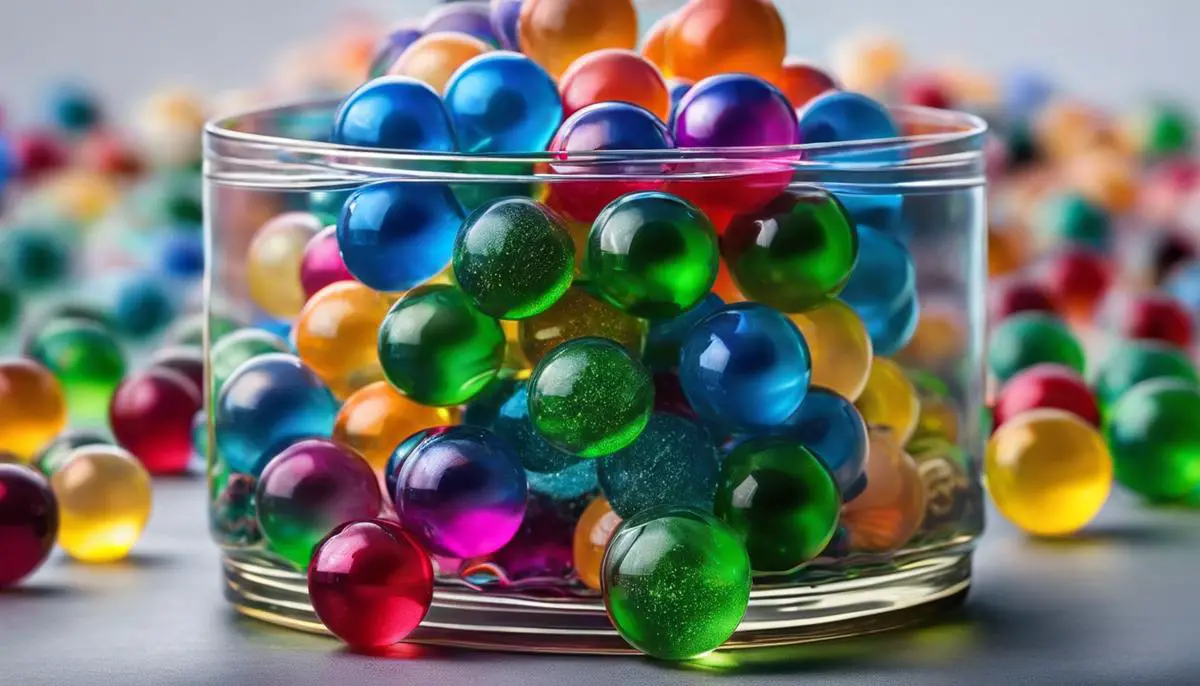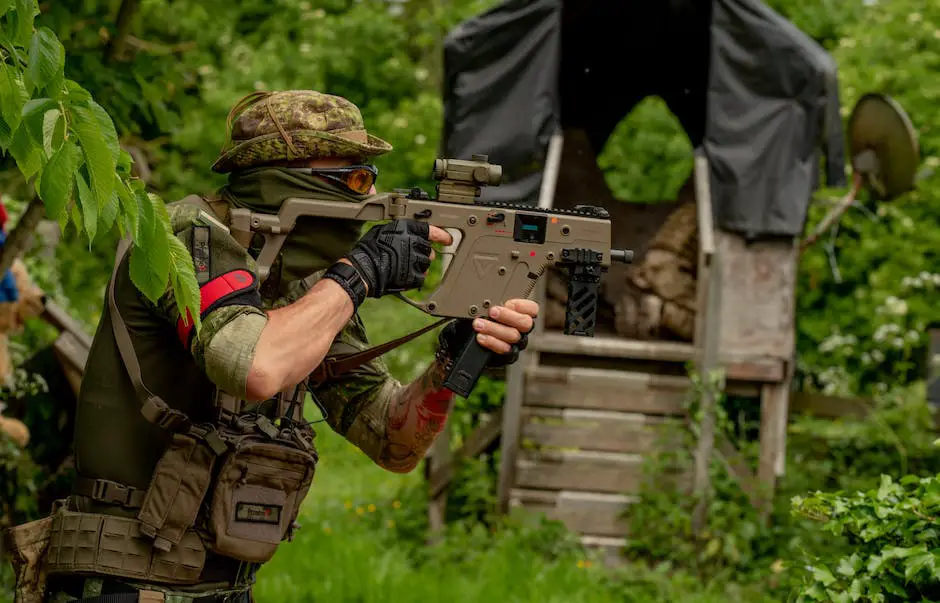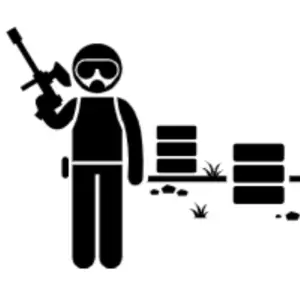As an Amazon Associate I earn from qualifying purchases.
In the ever-evolving world of recreational shooting sports, enthusiasts are continually seeking ways to enhance their experience while ensuring safety and compatibility with their current equipment. With the rise in popularity of gel balls in shooting games, a question presents itself: can traditional airsoft guns, designed to shoot plastic BBs, be adapted to fire gel balls? This exploration begins with a deep dive into the intricate mechanics of airsoft guns, scrutinizing their propulsion systems which range from electric to air or gas-powered methods. An understanding of these mechanics is integral to assessing the viability of using gel balls as an alternative ammunition. Furthermore, examining the unique properties of gel balls—sizing up their dimensions, weighing their mass, and evaluating their composition—will illuminate whether they can be loaded into and fired from a standard airsoft gun without inflicting damage or compromising safety. Considering the potential for modification is also crucial, as it would entail adapting various components such as the barrel, hop-up mechanism, and magazine to ensure seamless operation with gel balls. The intersection of these insights paves the way for an informative journey into the realm of airsoft enhancements and modifications.
Table of Contents
Airsoft Gun Mechanics
Gel Balls vs. Traditional BBs: The Airsoft Showdown
When you first cross the threshold into the world of airsoft, you’re introduced to an exhilarating community of tactical games, replica firearms, and, most importantly, fun. However, as you delve deeper, you start to notice the subtle nuances that can make or break your game. One such aspect is the type of ammunition you use. Airsoft guns are typically associated with plastic BBs, but there’s a fresh challenger in the field: gel balls. Let’s break down how airsoft guns function with these two ammo types and what you need to know to stay on target.
Firstly, it’s important to note that not all airsoft guns are automatically compatible with gel balls. Traditional airsoft guns are designed to shoot plastic BBs, which usually come in 6mm size and weigh between 0.20 to 0.40 grams. Gel balls, on the other hand, absorb water and swell to a slightly larger size, varying from 7mm to 8mm, and are significantly lighter once hydrated.
When using gel balls in a traditional airsoft gun, it’s paramount to ensure that the gun can accommodate the larger size of the hydrated gel balls. If not, you might be facing a jammed barrel or damage to the gun’s internals. But let’s assume you have a gel ball-compatible airsoft gun in your hands; how does it function differently?
The most important difference comes down to the propulsion mechanism. Traditional airsoft guns use either a spring, an electric motor, or compressed gas to launch BBs. Gel ball guns often use a similar firing mechanism, but the lighter weight of the gel balls leads to a crucial change in performance.
For spring-powered airsoft guns, using gel balls could mean a loss in power and range, since the spring’s force is calibrated for a heavier projectile. This might sound like a disadvantage, but lower power could be beneficial for close-quarters matches, reducing the chance of injury and the need for heavy protective gear.
AEGs, or Automatic Electric Guns, function with a battery-powered motor that compresses a piston to create a blast of air which propels the BBs. With gel balls, AEGs may cycle faster due to the reduced resistance from the lighter ammo, but again, with less impact and range. The quick fire rate could be advantageous for suppressive fire and maintaining pressure on your opponents.
Gas-powered airsoft guns, which include CO2 and green gas models, might actually benefit from using gel balls as the lighter ammo requires less gas to propel, potentially boosting shot count per gas fill. However, precision might suffer due to the gel balls’ lower stability in flight compared to heavier plastic BBs.
Loading gel balls into magazines also presents a change. Since they’re hydrated, gel balls need to be free from debris and perfectly sized to avoid feed issues. They can shrink or grow depending on the water content in the air, which can affect performance during a game.
Another aspect to consider is the impact on targets. Gel balls burst upon impact, which means less cleanup but also less certainty when it comes to hit confirmation, especially at longer distances or through dense brush. Gel balls might also be swayed more by wind, making them less ideal for sniping roles or when pinpoint accuracy is crucial.
So, what’s the takeaway for an air enthusiast deciding between traditional BBs and gel balls? It’s all about the play style and game conditions. If you’re looking for more realistic skirmishes with a focus on tactics and precision, stick to traditional BBs. For a backyard battle or a close-quarters indoor arena where safety and quick play reign supreme, gel balls might just be your best friend.
Remember, no matter which ammo type you choose, always use quality airsoft guns designed for that specific ammunition, wear appropriate protective gear, and play fair. Happy shooting!

Gel Ball Properties
Gel Balls in Airsoft: Navigating the Nuances of Novel Ammunition
Honing in on the physical properties of gel balls and their implications for airsoft marksmanship can be thrilling for any enthusiast who cherishes a deep dive into their craft. Unlike their traditional plastic BB counterparts, gel balls offer a unique set of characteristics that redefine the mechanics and outcomes of airsoft engagements.
Gel balls are essentially small beads of super-absorbent polymer that swell up with water. Size variance in gel balls is a real consideration, as these orbs generally range from 7mm to 8mm when hydrated, slightly larger than their standard 6mm BB equals. This size difference isn’t just for kicks—it’s crucial to ensuring that the gel balls properly feed and exit through airsoft gun barrels designed for them.
Moreover, the hydration level contributes significantly to their weight, which typically hovers around 0.20 grams when fully saturated. However, slight deviations in water content can alter the weight and, consequently, the trajectory and energy transfer upon impact. Since they’re lighter than most plastic BBs (which range from 0.20 to 0.40 grams), shooters will notice a marked difference in range and precision. The heftier the ammo, the straighter the path—but gel balls being on the lighter side, they are considerably more susceptible to the whims of wind and weather.
Additionally, the squishy consistency of hydrated gel balls plays into airsoft gun’s performance. Their tender structure can dampen the muzzle velocity upon firing due to a minuscule yet not insignificant compression that occurs as they barrel through the gun. While this reduction in speed might seem like a drawback, it immensely affects the pain factor upon impact, making gel balls a softer option for indoor skirmishes or close-quarters combat, where safety and comfort are heightened concerns.
Furthermore, the surface texture of gel balls, slightly sticky and jelly-like to the touch, can challenge the predictability of their flight path. Unlike the smooth, hard surface of plastic BBs that allows for more consistent air resistance and trajectory, a gel ball’s sticky exterior may pick up bits of debris or dust, influencing its steadiness in the air.
It’s also worth recognizing that gel balls are biodegradable. While this wins points for environmental consciousness, their degradable nature implies that users must be mindful of the shelf-life and storage conditions of their ammunition. Humidity and temperature can wreak havoc on gel balls, as too much moisture can cause them to burst before use, and dehydration will shrink them into unusable sizes.
In the realms where skirmishes ensue and pretend battles rage, choices in ammunition are pivotal. With gel balls, the margins for error may be slight, but the advantages they procure in safety and biodegradability tilt the scale for many. Knowing these physical characteristics and their implications for airsoft gun performance empowers enthusiasts to tailor their battle plan and gear, leading to strategic advantages in the field that could turn the tide of any playful conflict.

Modifications for Gel Balls
Modifying Airsoft Guns for Gel Ball Use: A Step-by-Step Guide
The hobby of airsoft has seen a rising interest in using gel balls as an alternative to traditional BBs. However, any enthusiast will quickly realize that modifying an airsoft gun to reliably shoot gel balls is not simply a matter of making the switch in ammunition. To reliably use gel balls, significant adjustments and understanding of the mechanics behind airsoft guns are necessary.
The Modifying Process:
First, it’s important to examine the barrel. Gel balls typically have a diameter of 7-8mm when fully hydrated, which is slightly larger than standard 6mm airsoft BBs. The inner barrel may need to be replaced with one that’s sized more appropriately to accommodate gel balls without jamming. A tightbore barrel designed for BBs will not work; instead, a barrel with an internal diameter slightly above 8mm proves to be more effective.
Next, the hop-up unit plays a crucial role in the performance of airsoft guns, imparting backspin on BBs to increase their range and stability. For gel balls, the hop-up may need a unique approach due to their tendency to deform. Soft hop-up buckings and hop-up units with adjustable pressure points can alleviate this issue. Additionally, gel balls don’t respond to backspin as BBs do due to their lighter weight and surface texture. Thus, tuning down or disabling the hop is often recommended.
To prevent jamming, magazines also require attention. Springs within standard airsoft magazines may crush gel balls, needing either modification or replacing with gentler counterparts. Moreover, some players choose to use gravity-fed hoppers, which avoid the need for magazine springs entirely.
For the gearbox in AEGs, ensuring that the cycle completes fully for every shot is paramount, as partial cycles can lead to crushed gel balls within the system. A sector gear chip can help achieve this by guaranteeing a full cycle. Further, the lower impact energy needed for propelling lighter gel balls can be achieved by using weaker springs, thereby reducing wear and tear on the internal components.
Concerning gas-powered guns, adjustments are similar to those for AEGs. However, the variable pressure of gas-powered systems may require finer tuning. A low-flow nozzle will aid in reducing the pressure per shot, which is a suitable modification for gel balls and will help avoid breaking them upon firing.
Adjusting for gel ball use is not complete without considering the projectiles themselves. In order for gel balls to function effectively, they must be properly hydrated. This means soaking them for the appropriate amount of time specified by the manufacturer, ensuring a uniform size and weight. Improperly hydrated gel balls will lead to inconsistent performance and may not fire at all.
Finally, it’s absolutely crucial to routinely maintain and clean your airsoft gun when shooting gel balls. Residue from the ammunition can accumulate in the barrel and hop-up unit, thus regular cleaning will keep performance optimal and extend the life of your gun.
These steps are just the beginning. It’s a journey of trial and error, requiring patience and a willingness to tinker. Converting an airsoft gun to shoot gel balls reliably is a niche within the hobby with its own sets of challenges and rewards, unlocking a unique way to enjoy the sport.

The quest to integrate gel balls into the airsoft experience encompasses both the curiosity to venture into new shooting dynamics and the prudence to avoid unintended consequences. While the allure of using a novel, possibly more environmentally friendly ammunition is strong, responsible adaptation requires an understanding of the fundamental differences between gel balls and traditional airsoft BBs. Our investigation not only sheds light on these differences but also charts a course for safe modifications—should they prove feasible—that respect the design limits of airsoft guns and the expectations of their users. Embracing innovation responsibly can lead to enriching the sport and community of airsoft, while ensuring that safety remains the paramount concern. Ultimately, only through methodical research and thorough testing can we responsibly welcome new possibilities in the world of airsoft and shooting sports.
Amazon and the Amazon logo are trademarks of Amazon.com, Inc, or its affiliates.

About Alwayne
Alwayne is a Pro Paintball Coach in profession. He has a long experience as a Paintball Coach. Now, Alwayne is sharing over 10 years of experience of all tips and tricks about paintballs. The reviews and guide are elaborate at its best!




